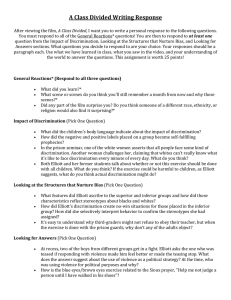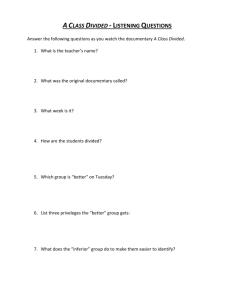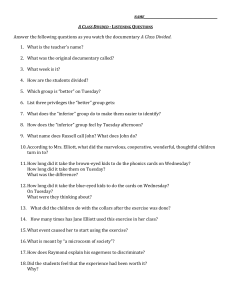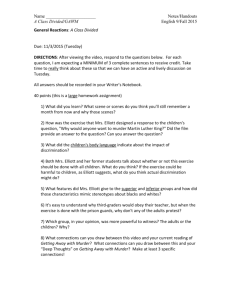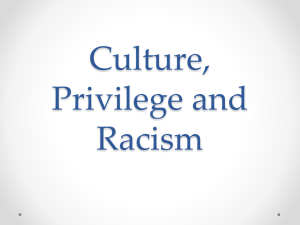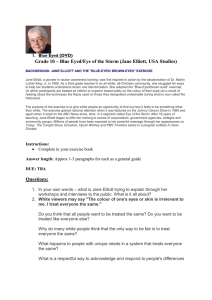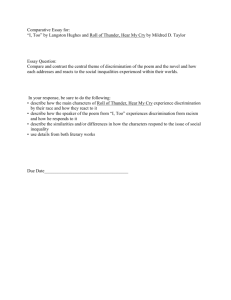A Class Divided Questions
advertisement
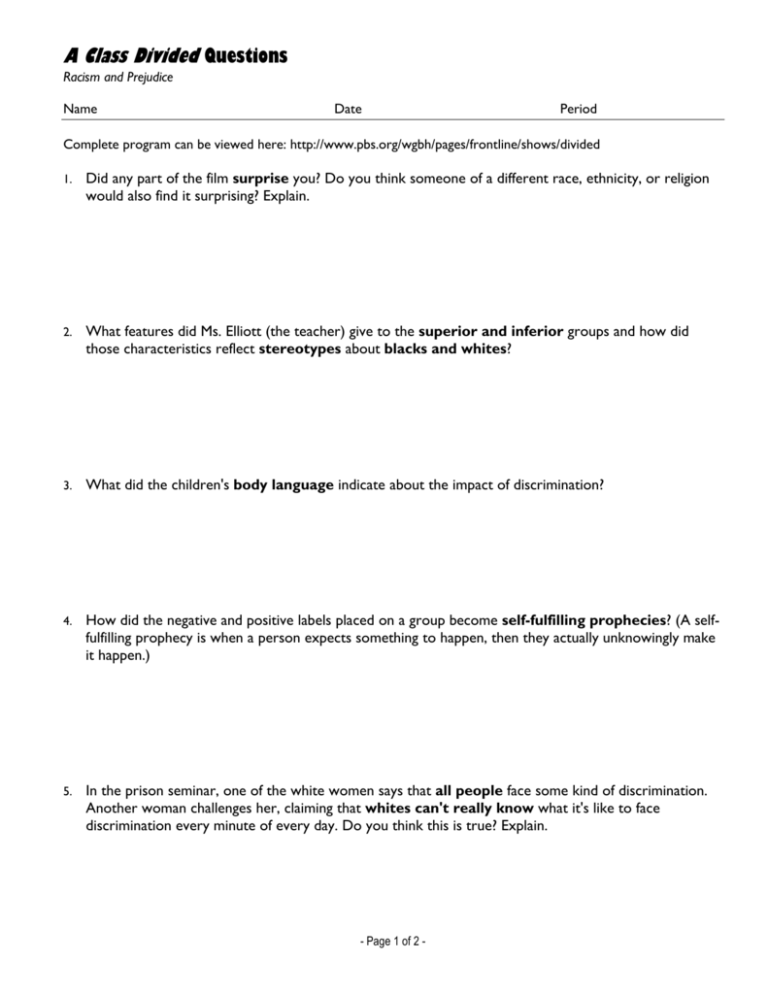
A Class Divided Questions Racism and Prejudice Name Date Period Complete program can be viewed here: http://www.pbs.org/wgbh/pages/frontline/shows/divided 1. Did any part of the film surprise you? Do you think someone of a different race, ethnicity, or religion would also find it surprising? Explain. 2. What features did Ms. Elliott (the teacher) give to the superior and inferior groups and how did those characteristics reflect stereotypes about blacks and whites? 3. What did the children's body language indicate about the impact of discrimination? 4. How did the negative and positive labels placed on a group become self-fulfilling prophecies? (A selffulfilling prophecy is when a person expects something to happen, then they actually unknowingly make it happen.) 5. In the prison seminar, one of the white women says that all people face some kind of discrimination. Another woman challenges her, claiming that whites can't really know what it's like to face discrimination every minute of every day. Do you think this is true? Explain. - Page 1 of 2 - A Class Divided Questions Racism and Prejudice 6. How did Ms. Elliott's discrimination create no-win situations for those placed in the “inferior” group? How did she pick and choose certain behaviors to confirm the stereotypes she had assigned? 7. It's easy to understand why third-graders might not refuse to obey their teacher, but when the exercise is done with the prison guards, why don't any of the adults object? 8. How did the exercise that Ms. Elliott designed function as a response to the children's question, "Why would anyone want to murder Martin Luther King?" Did the film provide an answer to the question? Can you answer the question? 9. Both Elliott and her former students talk about whether or not this exercise should be done with all children. What do you think? If the exercise could be harmful to children, as Elliott suggests, what do you think actual discrimination might do? - Page 2 of 2 -

